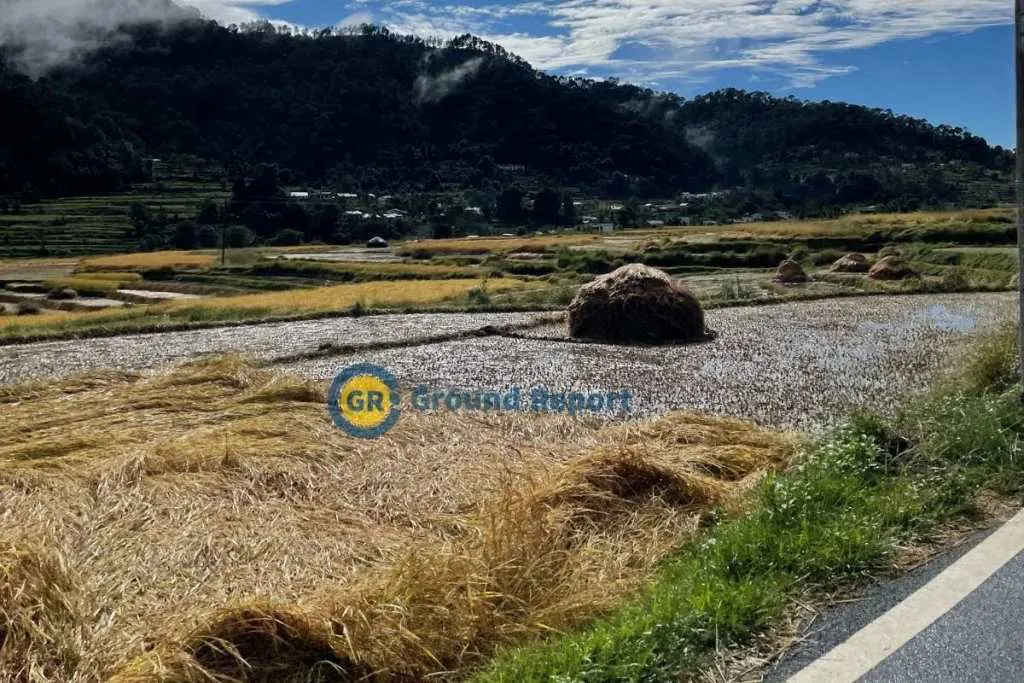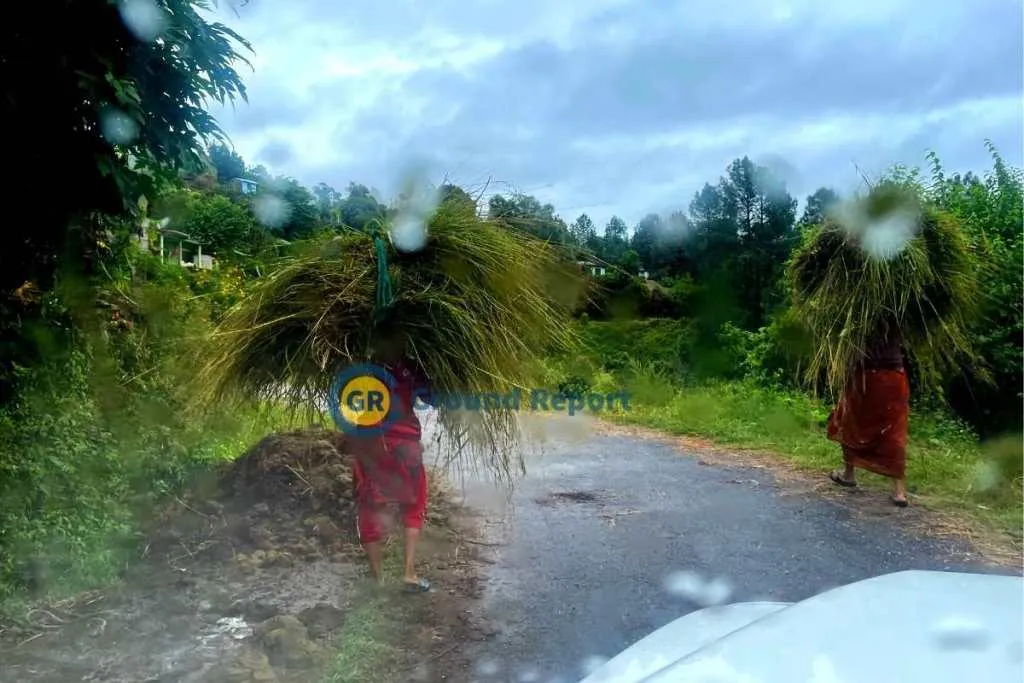The farmers had started harvesting, but due to 11 days of rain in October, the crops of many farmers remained lying in the fields. Paddy crops were destroyed due to water being filled in the fields.
Bhagwat Singh, a farmer from Bageshwar district, says that he had never before seen so much rain in October. This time he had sown paddy in his field, the crop was very good. But he had cut the crop and kept it in the field when it started raining heavily. There was a red alert of heavy rain in the state for 3 days. If the rain had stopped for a day, he could have kept his crop in a safe place. Untimely rain ruined his dreams.
Bhagwat can grow only that much paddy in his field so that his family can be fed throughout the year. Due to the crop failure now they have to buy rice from the market.
A similar situation is being seen in many villages of Bageshwar district. Paddy has been spoiled due to flooding of farmers’ fields on a large scale. You will see paddy lying in the fields and submerged in water.
Paddy Straw heaps save crops from rain

In hilly areas, farmers make a paddy heap after harvesting, it is a dome-shaped grass stock, in which the paddy seeds are covered with grass, which protects it from rain. If the farmers had made the paddy heap in time, perhaps their crops could have been saved. Some farmers were successful in this, while the crops of many farmers were left lying in the field.
Most of the farmers in hilly areas store paddy in this traditional way, they do not have any other storage facility. These heaps of paddy built in the fields can keep the crop safe only when the weather is clear and the sun is shining. If it rains for a long time, then these straw heaps prove to be unsuccessful in protecting the crop. A crop moistened with water begins to germinate, and the seeds of the paddy break and turn black, which then brings down its price in the market.
Monkeys destroying crops

Monkeys and other animals are also engaged in destroying these straw heaps, causing great loss to the farmers. Rajuli Devi of Chaurasu village says that she is very upset with the monkeys, ‘The government leaves the monkeys in their village, they ruin our crops and gardens here. This problem should be resolved as soon as possible. The rain has already ruined the crop, the little that was left has been ruined by the monkeys.’
Climate change behind untimely rains
According to TOI, the Kharif crop has suffered a loss due to excessive rain in the Terai region, which is considered to be the Rice Bowl of Uttarakhand. The farmers of Rudrapur district say that they have suffered a loss of 10 thousand rupees per acre, which the government should compensate.
GB Pant University meteorologist RK Singh said that in October, 286 mm of rain was recorded within 11 days, which is much more than the average of 38.7 mm of rain for the whole of October. The changes taking place due to climate change are quite surprising.
At present the farmers of Bageshwar district are sad and hoping for some help.
Keep Reading
Indian agriculture household earns just Rs. 10,218 in a month: Govt
Post-harvest losses still high, reveals data shared in Lok Sabha
Khadi Haat village’s power-free wastewater treatment solution and more
Support us to keep independent environmental journalism alive in India.
Follow Ground Report on X, Instagram and Facebook for environmental and underreported stories from the margins. Give us feedback on our email id greport2018@gmail.com.
Don’t forget to Subscribe to our weekly newsletter, Join our community on WhatsApp, Follow our Youtube Channel for video stories.







